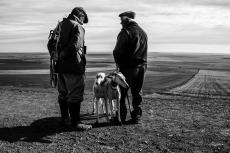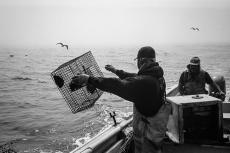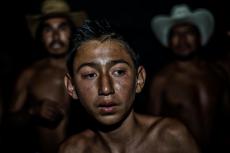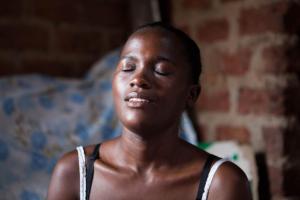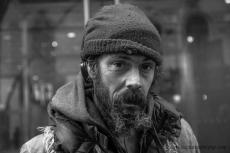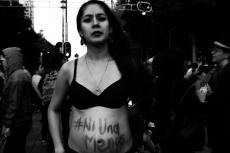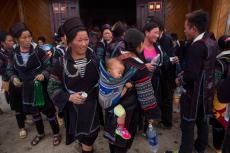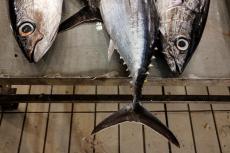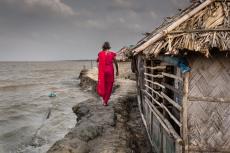January 2017 Spotlight
Featured exhibits submitted to SDN in December 2016
Wake Up and Smell the Misery>>
by Tony Savino/ Dominican Republic
by Tony Savino/ Dominican Republic
For decades, Haitians have settled in the Dominican Republic to work in sugarcane fields and banana plantations and, more recently, in the booming construction sector. The Dominican government formerly granted citizenship to all children born in the country, known as
jus soli citizenship, with the ...
Miercoles negro mujeres Argentina, Black Wednesday Argentine woman>>
by Eric Verdaasdonk/ Argentina
by Eric Verdaasdonk/ Argentina
Thousands of women, dressed in black, interrupted their work in Argentina for an hour to protest against an endless plague: more than 200 of them are killed each year, victims of gender violence ...
Black Hell>>
by Valerie Leonard/ India
by Valerie Leonard/ India
In the State of Jharkhand, in the northeast of India, the Damodar Valley became a hell on Earth. The open-cast coal mines there took over the forest. These mines have been active without interruption for over a century. The extraction of the "black diamond", destroyed the ...
The Price of Construction>>
by David Verberckt/ Bangladesh
by David Verberckt/ Bangladesh
Subject of a frantic construction boom, Bangladesh is in acute shortage of sand and gravel for building purposes. The Himalayan rivers in the north of the country are being dug up during the dry season for their quality stones that will be crushed into gravel for the construction sector. Thousands of...
Tatuadores de Cuba>>
by Allison Dinner/ Cuba
by Allison Dinner/ Cuba
Among all the changes happening in Cuba right now, one thing is staying the same; owning a tattoo shop and giving tattoos are prohibited. They are the only art form in Cuba that is still frowned upon. Despite the governments' suppression, tattoo artists have managed to create a thriving underground ...
Cicatrices>>
by David Arribas/ Spain
by David Arribas/ Spain
Spain is one of the few countries where the hunting with greyhounds is a legal activity. What was a way of survival for the familiar core of rural areas, now (when it is not a vital activity anymore) has been reinvented and turned into a sport, preserving its practice into the traditional culture...
Echoes of the Indelible Sea>>
by William Bay/ Mexico
by William Bay/ Mexico
With an incoming president that has threatened to build a wall and revoke NAFTA, and xenophobia running rampantly out of control, it's important to see the people of the world in a different light. Especially our neighbors. And especially when they supply much of our food. Echoes of...
The skin does not lie>>
by Ricardo Castro Castro/ Mexico
by Ricardo Castro Castro/ Mexico
Mexico is agitated. The country is facing social transformations and conflicts. Those changes go from new ways of legislation to violence linked to drug trafficking and corruption. This convoluted context has fostered demonstrations, along with social and political movements all over the country ...
Love a positive life - adolescents and HIV>>
by Gemma Taylor/ Various
by Gemma Taylor/ Various
Despite the phrase 'AIDS apathy', referring to HIV-related issues falling off the world's headlines over recent years, the epidemic has not gone away. HIV is the second largest killer of adolescents globally, and the first in Africa. Adolescents are the first generation never to have ...
Thanks Ronnie>>
by Tom Kavana/ United States
by Tom Kavana/ United States
These photos were taken over a year's time in NYC. They are by no means all of them. The homeless population in the city is growing at an alarming rate. What are the causes, what is the solution? The debate is endless. Patient dumping, addiction, poverty, and mental illness--these are the factors ...
Not one less>>
by Marisol Cid/ Mexico
by Marisol Cid/ Mexico
Protest of women against the femicides that live in the city of Mexico, every day more violent and frequent. Data reveal that in 7 years (from 2006 to 2013) almost 3,000 murders of women occurred, between 2013 and 2015, 6,488 women were killed according to data from the INEGI statistics. This is 46%...
Hmong Funeral>>
by Carlos Téllez Lucio/ Viet Nam
by Carlos Téllez Lucio/ Viet Nam
The Hmong tribe is one of the oldest people in the high mountains of northern Vietnam. Rituals around burials are related to their deep belief in the reincarnation of the human soul.
The Amazon Conquerors>>
by Manuel Seoane/ Bolivia
by Manuel Seoane/ Bolivia
The Amazon region is one of the few places of the earth that still conserves the pure life of nature. Over there, life follows its own rules and not the ones imposed by humans. During decades there were many adventurous explorers, who, guided by their greed, tried to conquer it and ended up succumbing...
Aci Trezza>>
by Emiliano Cribari/ Italy
by Emiliano Cribari/ Italy
The air is filled with the smell of blood, alongside the fishermen's voices. Aci Trezza's fish market begins at 2 am. It's like a shapeless, flawed but enchanting dance. A unanimous chorus made of hands and bargain. When one fisherman yells something, the one nearby knows that, soon...
Source of Life>>
by David Verberckt/ Bangladesh
by David Verberckt/ Bangladesh
Bangladesh is dominated by the fertile Ganges (Padma), Brahamaputra (Jamuna) and Meghna delta. The alluvial soil deposited by the rivers when they overflow has created one of the most fertile plains in the world appropriate for agriculture during the non flooded season. Unfortunately, the country is...










